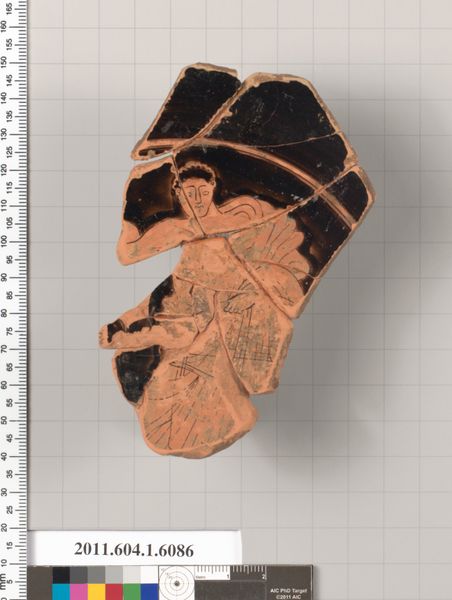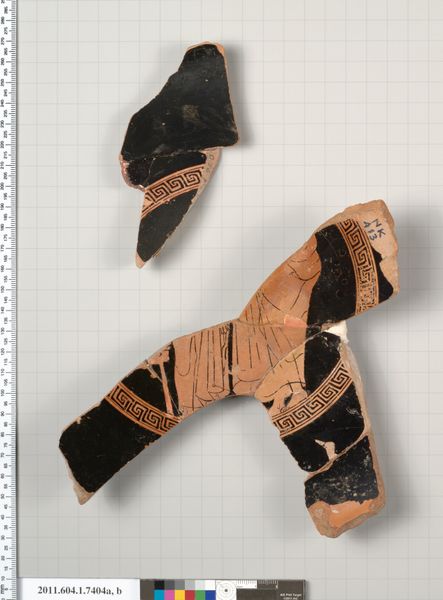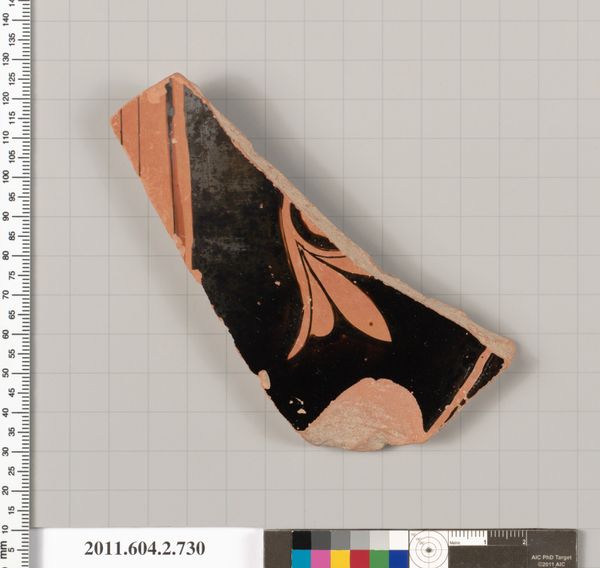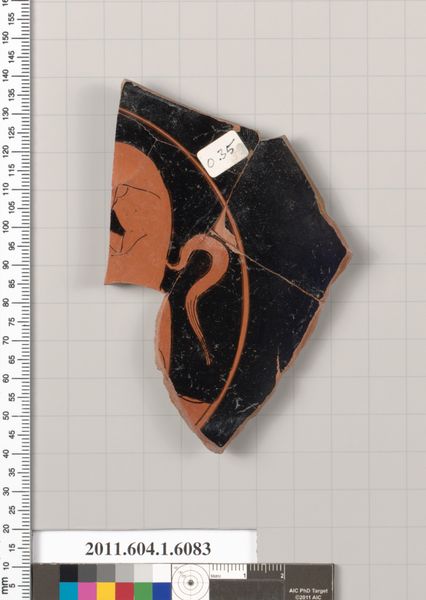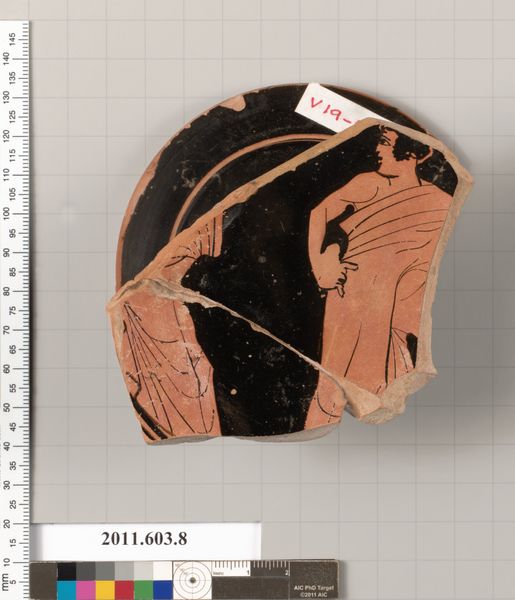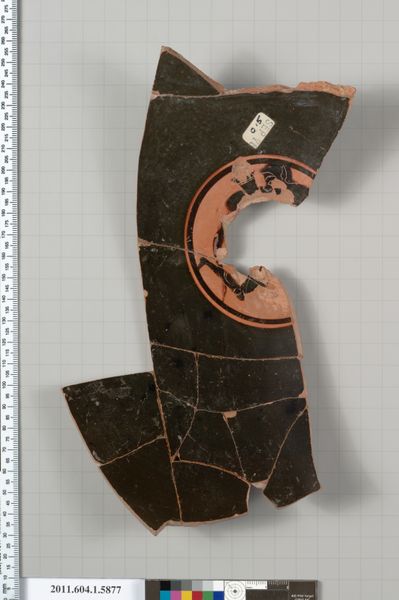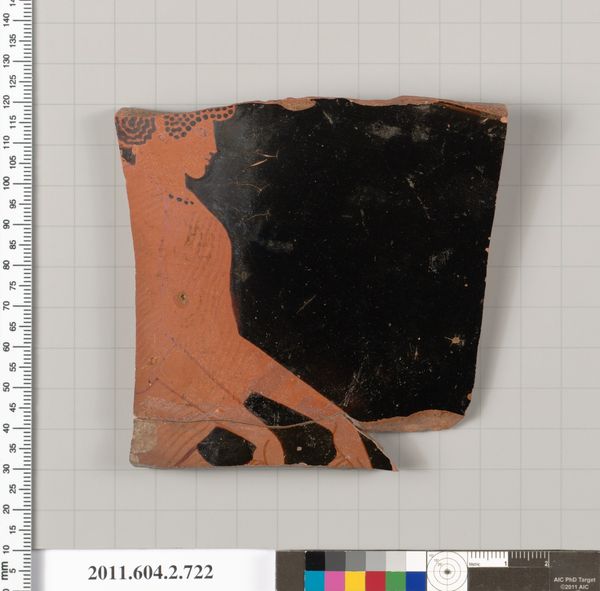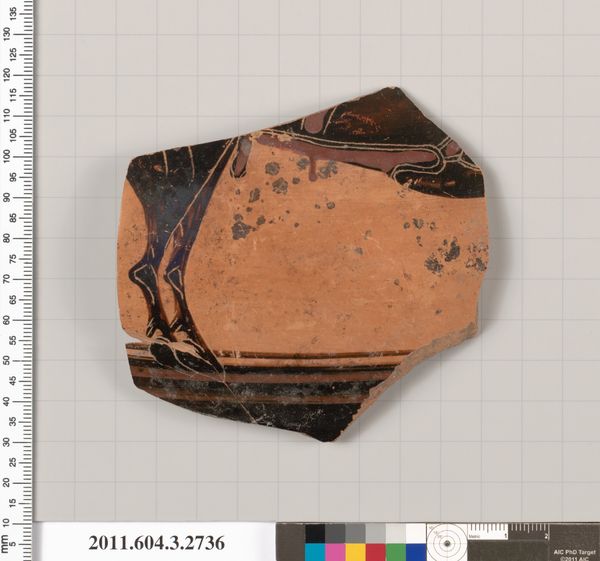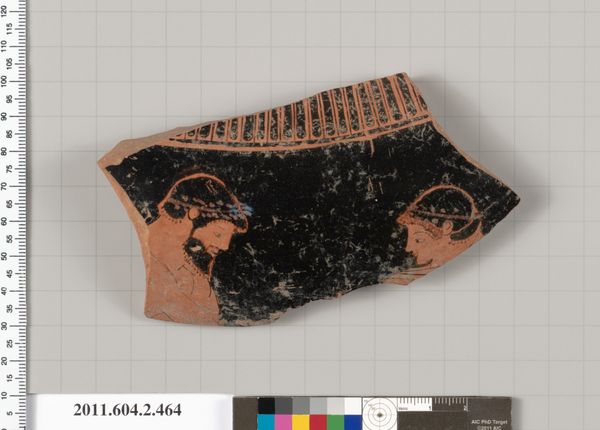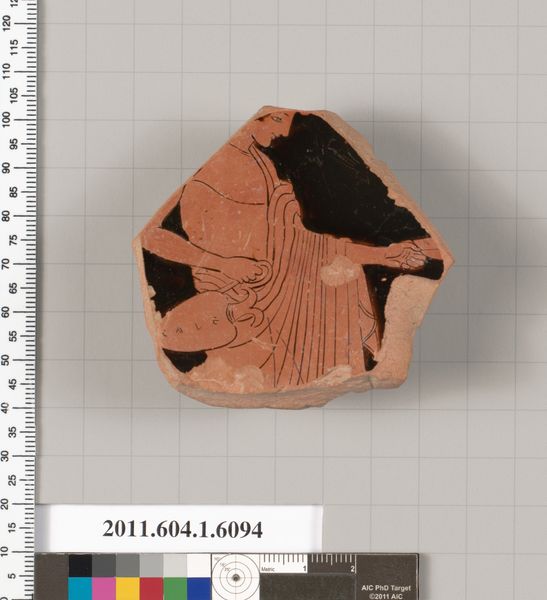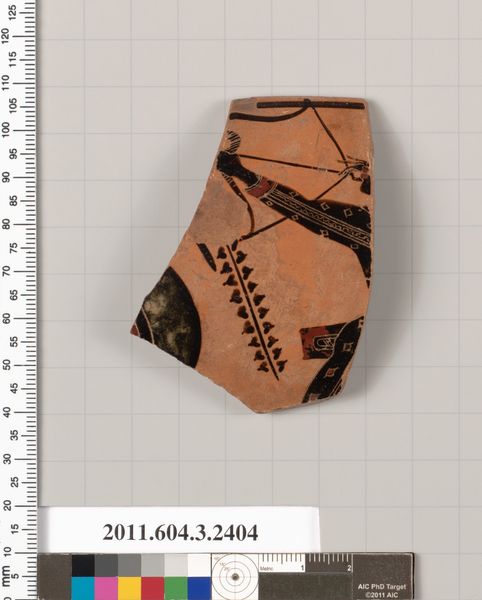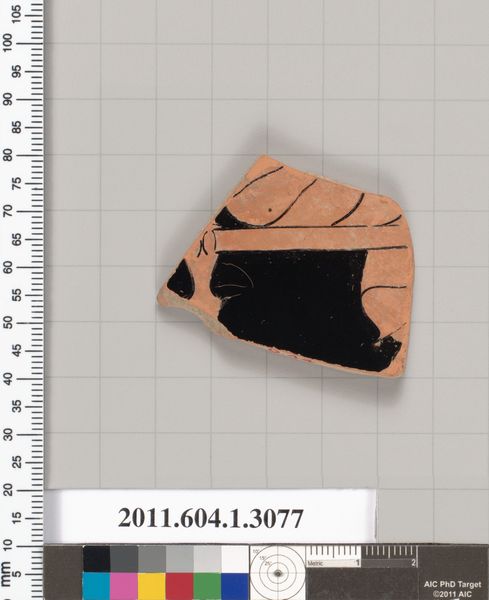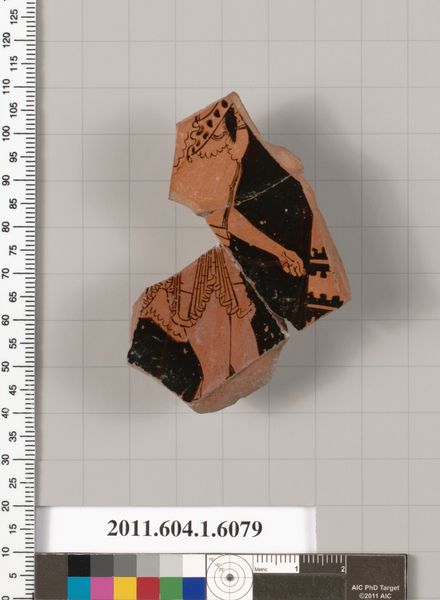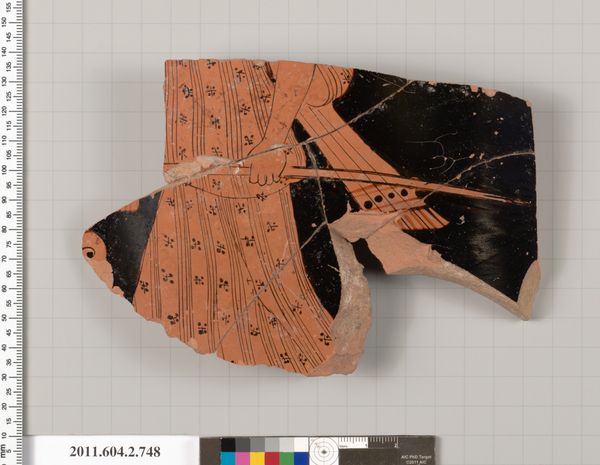
drawing, ceramic
#
drawing
#
greek-and-roman-art
#
ceramic
#
vase
#
figuration
#
ancient-mediterranean
#
nude
Copyright: Public Domain
Curator: This is a terracotta fragment of a kylix, or drinking cup, dating back to around 530 BC. It’s currently held in the collection of the Metropolitan Museum of Art. The artist is known as Apollodoros. Editor: The deep blacks against the pale terracotta feel incredibly striking. Despite the damaged surface, a real sense of narrative intensity comes through. Curator: Indeed. We see a figural composition rendered in the black-figure technique characteristic of Athenian pottery during this period. Observe how incised lines articulate the musculature and details of the nude figures. The composition, although fragmented, suggests a dynamic interaction. Editor: It's curious to see only parts of the story. I'm drawn to the way the black slip seems to simultaneously define and obscure the bodies, creating a play between positive and negative space. I can't help but imagine the gatherings where such a kylix might have been used. Were the conversations equally fragmented and intense? Curator: Exactly. Consider how these vessels functioned within the symposia, the drinking parties of ancient Greece. The imagery depicted on them often reflected the values and concerns of the aristocratic men who used them. The presence of nude figures relates, often, to athletics or mythology. Editor: So, the visual vocabulary then, the nude figures, would’ve been easily readable as signs of status, stories or perhaps even aspirations of that particular social group. I suppose seeing a fragment now, it forces one to acknowledge both the cultural specificity and the universal nature of those social structures. Curator: Precisely. And in its shattered state, this kylix offers a powerful commentary on the fragility of those structures and indeed the very act of representation itself. Editor: It truly makes one ponder how a broken piece of pottery can offer such layered reflections on ancient rituals, and, more importantly, our interpretation of them in modern-day contexts.
Comments
No comments
Be the first to comment and join the conversation on the ultimate creative platform.
